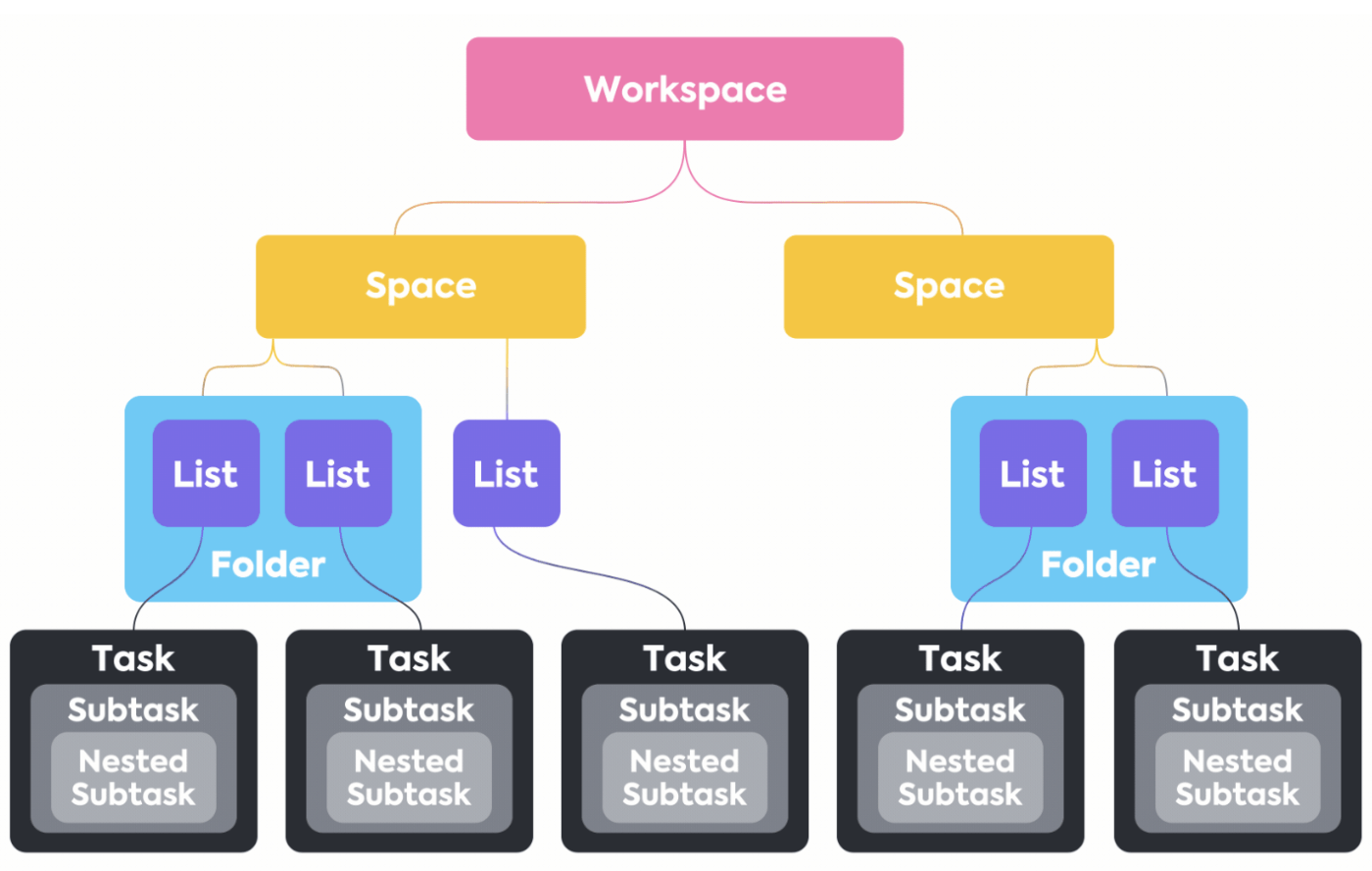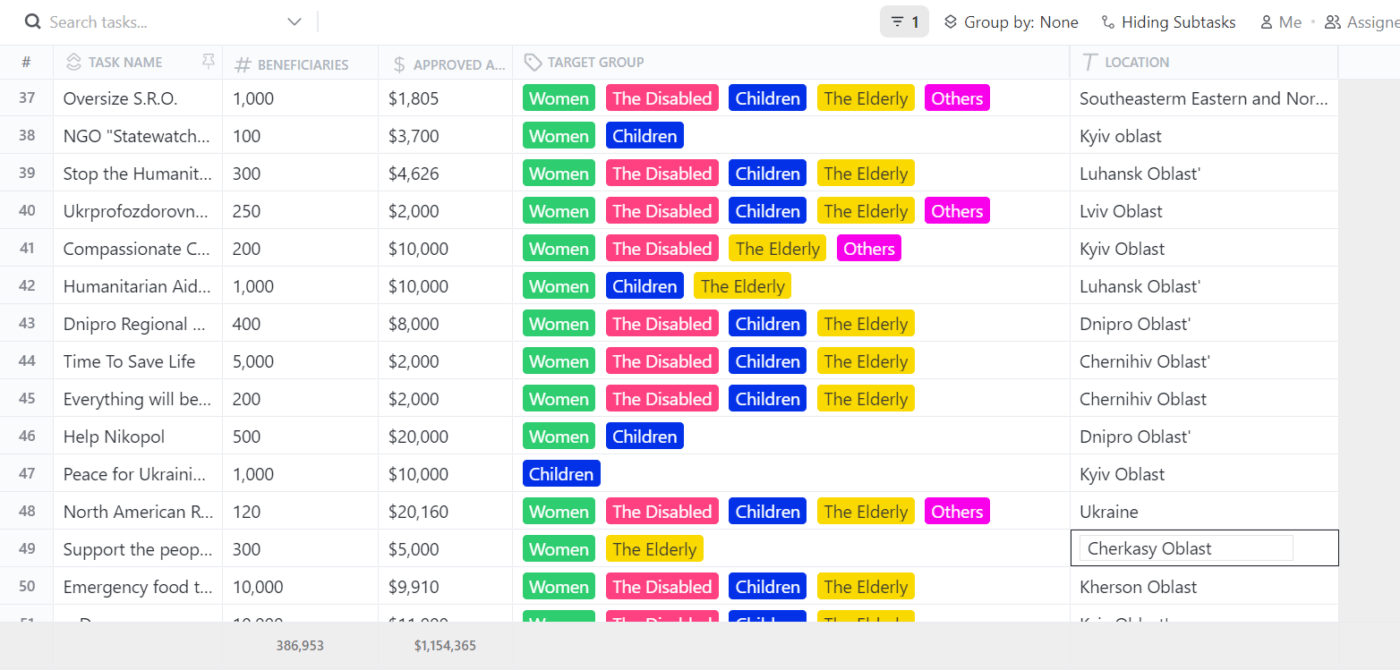

Hi, my name is Matt Kriteman, Head of the Humanitarian Response at Help Ukraine 22 (HU22). This organization was built as we, a group of American and Ukrainian experts, fled to Poland five days before the war started.

- Tell us about HU22
- Why did you first decide to prioritize optimizing operations?
- As the war has progressed and evolved, how have you kept the team aligned, productive, and motivated?
- Tell us more about your process for managing microgrants
- Let’s bring it all together—How is your work helping people in crisis?
- Where is the future of humanitarian efforts headed?
Tell us about HU22 and the impact you’re having on the war in Ukraine
Two days after the war started, HU22 gave our first humanitarian microgrant. Microgrants are the fastest, most-effective method to immediately fill-the gaps in the international humanitarian response in Ukraine.
We are a strictly humanitarian operation serving civilians, the majority of them Internally Displaced Persons (IDPs), which is more than one-third of the country right now, including women, children, the disabled, and the elderly.
Because we operate as an agile, rapid-response organization, we rarely program projects for more than a month. This is because needs change, especially during a war. But during these challenging times, ClickUp has allowed us to operate at the pace of the war, yes, but the needs of the people, without the massive burden of administrative complications is what drives our work.
From February 26th to date, we have successfully implemented the following:
- 119 Projects
- 386 953 Direct Beneficiaries (people who were helped)
- $1,157,965 Total grant disbursed
- $1,793,041 Total aid, including supplies and medical equipment
Every single part of this work is documented, organized, and aggregated in ClickUp.
As you launched HU22, why did you first decide to prioritize optimizing operations?
From March to April, our bank account went from $20k to $1 mil USD, and our grant request for humanitarian submissions went from 0 to 150. It was time to disburse.
Ironically, one month before this, I was in Eastern Ukraine working on a US-funded project for youth engagement.
While I was not enjoying the potential threat of a mechanized invasion 40 miles away, I was enjoying my free trial of ClickUp, specifically the ability to break down tasks and deliverables into different actions, and then display that to the donor. They were impressed, and I even successfully converted one of their team members to ClickUp.
Then, I got a call from my boss, “You need to be on the next train out. Not tomorrow, now.” This was followed by a call from the US State Department saying the same thing.
After a series of rapid texts to my family back home, I crossed the entire country from east to west within 24 hours.
A week later, my American boss and his Ukrainian wife set up shop in the Hilton. Shaken, scared, and with money coming in to ‘help Ukraine,’ I made a new Workspace in ClickUp.

At a technical level, ClickUp was incredible because as we had to divide large amounts of money across many projects, each individual task in ClickUp represents the absolute best activity for microgrants.
What’s interesting is that this method, getting microgrants to local partners to implement humanitarian projects, is what larger actors such as the UN family, Save the Children, and others are all doing now, six months later. However, we were not only first, but we remained the fastest. This is what we do.
In international development and humanitarian work, the absolute biggest drain of time is liaising with projects. This cuts into effective hours, staff time, and funding.
At the same time, sending money and help into an active war zone is serious. The Board of the non-profit that Help Ukraine 22 is grounded in knew that we needed full accountability.
Specifically, the ability to integrate data collected through basic survey tools like Jotform with ClickUp allows us to explicitly communicate in a personalized and secure way at key project intervals via email and integrate this into our legal policies, and documents to be signed, as well as automate the “chasing” that needs to be done as our projects operate at the pace of the war to fill the gaps in humanitarian assistance.
As the war has progressed and evolved, how have you kept the team aligned, productive, and motivated?
At any time, I can reference our Dashboard, List view, or individual task to anyone from my admin team, the entire organization, the board who has financial responsibility, and, more importantly, to donors to give an immediate overview of our projects.

What has been even better is the ability to immediately provide aggregate numbers based on our target group, i.e.:
- “Children” via thematic region
- “Relief” (person-to-person assistance like a shelter)
- “Resupply” (providing direct access to goods like medicine or equipment)
- And more recently to “rebuild” (rebuilding damaged structures and homes) or the newest “resilience” (psychosocial support and retraining of trades for income)
In addition to the basic nuts and bolts of any project management, what is even more interesting to note is how well my team of young Ukrainian professionals, all displaced by conflict, caught onto ClickUp so fast.
Keep in mind that my main ClickUp Jedi, Masha, fled Ukraine with her mother during active air raids in a train with no lights, set up her life in Germany through a bureaucratic nightmare, and never missed a beat on admin because of ClickUp. My other colleague, Vitaliy, who cannot leave the country, has updated ClickUp repeatedly in a bomb shelter.

ClickUp’s intuitive UI and accessibility across cultures saved us big time. After working in Ukraine for years, I know the concept of accountability and communication is simply different than in the US or even the EU. And ClickUp helps.
ClickUp provides transparency and, therefore, ownership for all engaged to ‘pitch in’ and complete a task, regardless of culture. When we had staff exhausted both in and out of Ukraine, I used ClickUp Whiteboards to outline and double down on our updates, automation, roles, and responsibilities.

The one-stop-shop for implementation strategy and internal communications via task comments makes ClickUp ideal for internal comms. Even better, when I’m in the field and can only use short encrypted comms. ClickUp’s security and privacy protection and the mobile app allow me to immediately manage key tasks on the fly with my team.
Let’s deep dive! Tell us more about your process for managing microgrants
In short, ClickUp is what allows me to use my limited bandwidth and time to focus on these types of important decisions rather than on admin.
Personalized email automation, triggered at various stations on the Kanban Board view plays a key role in our microgrant process. This literally saves me at least one, if not two, work days per week.
Once a microgrant project is approved, checked, and paid, I drag and drop it like it’s hot. Boom! Custom Field! A welcome email outlining the amount approved name of the project is immediately sent in addition to project media and safety guidelines and reporting. And a formal, legally binding document that guarantees our partner adheres to our protocols. They have to sign this to get paid.
Only after a project is properly completed and reported, with all financial info and they get a copy signed by us, which says they don’t have to pay the money back!
When we officially move to Media & Data Collection mode, another personalized email is sent out, along with a separate form to fill in where our partners upload Monitoring & Evaluation (M&E) across 32 data points that includes everything from successes, problems, changes, uploading of pictures of implementation, receipts, and even a voice clip, like this one.
Last but not least, when the project is checked and completed by the partner, we have all the receipts, confirm implementation, and all the M&E is done. Then, we drag and drop them for the last time. A congratulatory email of thanks is drafted and personalized by the whole Humanitarian team and I. They get their final letter that they don’t have to pay back the grant and Are offered a certificate of achievement, which to Ukrainians is a big deal from a US organization:

Perhaps even more important is my ability at any time I can show anyone my impact in a beautiful, real timetable like this:

This allows me to concentrate on the real issues—helping people.
Let’s bring it all together—How is your work helping people in crisis?
Helping people is hard. In fact, it’s an entire science. At least that’s what they told me when I paid for two degrees in International Development.
Currently, I have two project requests in central Ukraine, where most displaced persons stay. Both are for bomb shelters at schools for children with disabilities, one school for young adults who are orphans and disabled, and another school nearby for children with visual disabilities. In Zhytomyr, where these schools are located, on average, there are 15 air raid alarms per week. According to Ukrainian (Marshall) Law, every school must have a bomb shelter that fits the students.
Together with our local partner, Statewatch, one of the best anti-corruption NGOs in the country who now, like everyone, works with humanitarian aid, has scoped these bomb shelter builds, liaised with local government, and given their thumbs up for transparency. In the fog of war, this bomb shelter has been left behind. So they contacted us. This is what HU22 does, we fill the gaps.
The problem is that for this geographical region, we only have a budget of $27,000 for these projects, which have collectively been scoped at more than $100,000.
I visited both of these places last week. Went into both of the shelters, met the kids, interviewed the staff and the local government, and filmed all of it. Now, together with Statewatch, I have to figure out how and where to use the money for maximum impact. This is my job, I am trained for it, and it is hard. But, with ClickUp, I have the time to focus on the actual craft of helping people and not on the admin.
Where is the future of humanitarian efforts headed?
I first learned about ClickUp with the advertisement that it can “save one work day per week.” This is an amazing optimization for any industry.
However, when you are working with people in a war zone, the ability to save time on admin and bureaucracy means the ability to literally help more people. It may sound silly, but do you know what the best thing I do for the people of Ukraine is? Talk to them like real people. What happens when you have such rapport? Trust. And with trust, we win against bureaucracy, the humanitarian crisis, and maybe even the war.
Without ClickUp, I would be more of an accountant and less of a humanitarian, which sadly is what most humanitarians are. That fails our mission of filling the gaps of those in need, and for me personally, fails my mission of being a change in this world.
The future of humanitarian action will be where big Tech and old Academia meet, shake hands and agree they need each other. I’m fortunate enough to work in that space and have proven delivery of core needs to 380,000+ women, children, elderly persons, and those with special needs in Ukraine.
Without ClickUp, I would still be debating how to formulate an email. Instead, my team, organization, and I are empowered, agile implementers of real help to real people.
This all started with a desperate email to the ClickUp Support team. “Please, can we have a free trial?! We are helping Ukraine!” To which they replied, “of course, we love what you do.”
That was the beginning of the support from ClickUp I needed as a humanitarian to help those I serve.



